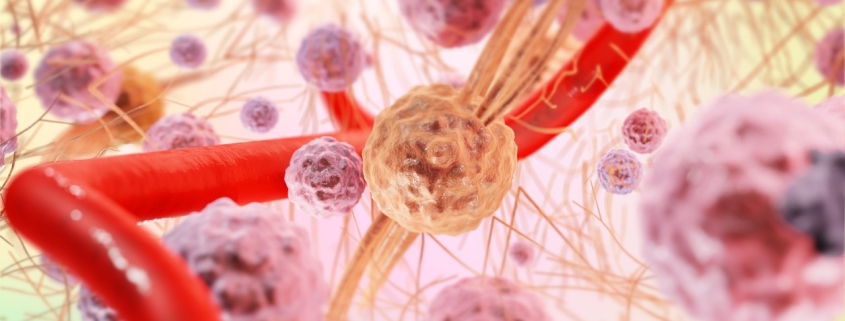Folate-Dependent Hypermobility: Researchers at Tulane’s EDS Clinic Look Into New Possible Mechanism For Hypermobile EDS
A recent publication by scientists at Tulane University’s EDS clinic proposes a possible new mechanism behind hypermobility: folate dependency. The researchers hypothesize that MTHFR mutations may lead or contribute to a form of hypermobile EDS and present a treatment with 5-methyltetrahydrofolate to improve the patient’s symptoms.
Tulane’s EDS Clinic
Two years ago, Tulane University’s EDS clinic opened its doors. “Thirty minutes after posting on the Facebook page about the new clinic, we were booked for six months,” assistant professor Jacques Courseault, physical medicine and rehabilitation and sports medicine doctor at Tulane’s Hypermobility and EDS clinic, remembers. Seeing more and more EDS patients, Courseault noticed overlaps: many of his patients were hypermobile and had dysautonomia and MCAS on top of other systemic manifestations. However, he also found similarities in their blood tests. As part of a fatigue panel, Courseault started testing for vitamin and other deficiencies, and a large portion of his patients with hEDS showed elevated folate levels in the blood, as well as genetic mutations in the MTHFR gene.
MTHFR Gene
The methylenetetrahydrofolate reductase (MTHFR) gene holds the information for making an enzyme with the same name. This enzyme is involved in the metabolism of folate (also called vitamin B9). Folate is a vital nutrient that plays a crucial role in many processes in the body, for instance, DNA synthesis and repair, growth and development, red blood cell production, and neural tube development in the fetus (the neural tube becomes the central nervous system). In turn, folate is essential to convert the amino acid homocysteine to methionine. Methionine is an essential amino acid required for the synthesis of proteins and other vital molecules in the body.
The MTHFR gene has been controversially discussed within the EDS community for many years. In general, MTHFR gene polymorphisms are common in the healthy population. According to Tulane’s paper, up to 35 percent of people have some changes in the gene, which are usually considered benign, meaning they should not cause problems within the body. However, mutations within the gene can reduce MTHFR activity between 9 and 80 percent, according to Tulane. The altered activity of the enzyme potentially leads to changes in levels of homocysteine in the blood and an increased risk of certain health conditions. MTHFR has been suggested as a contributing factor to hypermobility for decades, but it has never been proven to be even associated with the condition.
Hypothesis
When Corseault noticed the changes in folate levels in the blood samples of his patients who simultaneously had MTHFR polymorphisms – specifically, mutation C677T and A1298C – he felt there might be more to it. “Spoiler, in our clinic, [the occurrence of MTHFR mutations] is significantly higher than in the general population,” Corseault states. Together with other researchers at Tulane, in particular Professor Gregory Bix, Director Clinical Neuroscience Research Center, he tried diving deeper into MTHFR mutations. “When a majority of your patients have very similar trends in their values, in this case, folate, there’s something there. So we basically put these ideas together based on what we were observing clinically, “Bix states. Their paper proposes the present hypermobility may be dependent on folate status through decreased activity of MTHFR.
Mechanism
The decreased activity of MTHFR disrupts the regulation of an extracellular proteinase, an enzyme that cuts a protein into two or more smaller pieces called matrix metalloproteinase 2 (MMP-2). MMP-2 usually helps break down components of the extracellular matrix, a network of proteins between the cells in tissues like bone, cartilage, and blood vessels that provides structural support. When MMP-2 levels in the blood are elevated, it leads to cleavage of decorin, a proteoglycan, ultimately interrupting extracellular matrix structure. “We know quite a bit about decorin. You can think of decorin as the molecular nails that anchor collagen fibers. So when decorin is not processed normally, the connective tissue is abnormal, and that could contribute to the hypermobility that many of these individuals have,” Bix explains. Consequentially, the collagen in the body becomes unstable, causing the typical hypermobility-related issues. Moreover, the process also triggers fibrosis, a pathological condition characterized by the accumulation of large amounts of extracellular matrix components, such as collagen and fibronectin, in the tissues, causing scar tissue. As a result, the fascia thickens, which causes myofascial pain. To prove this statement, the authors present an ultrasound of a patient’s lumbar fascia that appears thickened and say they have seen increased fibrosis in their hypermobile patients (with MTHFR mutations), underlining their hypothesis.
Data
Now, unfortunately, the paper refers to clinical observations but is not providing patient data. However, according to Bix, a follow-up publication will show the mentioned clinical observation and data behind the hypothesis in the near future. “As scientists, sometimes you have such a great idea, you really just want to get it out there because it may benefit a lot of people. But then we want to follow that up with the facts, with the numbers, so to speak,” Bix states.
Treatment
Based on their observations, the researchers suggest treating hypermobile patients with 5-methyltetrahydrofolate, a supplement that is the end product of MTHFR. In theory, this should help with methylation and normalize folate levels. According to Courseault, it should be pharmaceutical grade and always taken under medical guidance because some people develop adverse reactions. However, so far, Courseault has seen a greater than 50 percent improvement in his MTHFR patients with hEDS. “Will it solve all problems with EDS? Not at all. But if we can identify an area that can clearly be diagnosed with testing and then treated with a pretty innocuous treatment, it is a huge win for medicine,” he emphasizes.
Further Research
Whether MTHFR mutations actually lead or contribute to hypermobility or even are one potential cause for hEDS is unclear at this point. Further research is needed to prove Tulane’s intriguing theory. But Courseault and his colleagues at the EDS clinic are determined to offer answers the community so desperately needs and maybe even better treatment options. “We do have a couple of things to prove, but for the benefit of humanity and because we see people suffer every day, we shared a hypothesis with a possible treatment that is safe and might help somebody,” Courseault says.
Future Plans
Besides planning on providing the community with the hard data behind the paper, they also want to prove their model with in-vivo – experiments or observations that are conducted in a living organism or system – and in-vitro – experiments that are conducted in a laboratory setting outside of a living organism – studies. Additionally, they are planning to evaluate the efficacy of 5-methyltetrahydrofolate supplementation. And even more excitingly, they are also considering looking into other genes recently suggested to play a role in hEDS: TNXB and TPSAB1 (hereditary alpha tryptasemia). Tulane University is paving the path together with several other institutions around the globe to finally solve one of the biggest mysteries in the connective tissue disorder world: finding the mechanisms behind hEDS. With more and more scientists researching potential genes involved in hEDS, we are getting closer to improved diagnostics, soon validating the experiences of hundreds of thousands of people with hEDS. “I think we’re just adding information to the pool, to open up resources and to bring more clarity to a very complex subject that people have been studying for centuries,” Courseault ends.
You may also want to read our interview with the researchers:
This article was first published as part of our May Newsletter here: https://www.chronicpainpartners.com/folate-dependent-hypermobility-researchers-at-tulanes-eds-clinic-look-into-new-possible-mechanism-for-hypermobile-eds/
Karina Sturm
May 2023













Leave a Reply
Want to join the discussion?Feel free to contribute!